The market is still viewing LINK through an outdated lens, while its fundamentals have undergone a fundamental transformation.
If you have been following the crypto market recently, you must have noticed LINK's strong performance.
Public data shows that LINK has risen nearly 30% in the past month; for an old coin with a lukewarm narrative, such performance is quite impressive, and discussions about LINK on social media have been increasing.
However, while most people are still debating whether LINK is just an "oracle token," the world's largest financial institutions, such as JPMorgan, SWIFT, Mastercard, and DTCC, have quietly positioned Chainlink at the core of their blockchain strategies.
Recently, crypto investment firm M31 Capital released a 90-page in-depth research report, making a bold prediction: LINK still has 20-30 times upside potential.
The report argues that the wave of tokenization of global financial assets will bring $30 trillion in opportunities, and Chainlink is not just a participant but the only infrastructure monopolist in the blockchain middleware space.
Deep Tide TechFlow has interpreted and organized this report, highlighting key points and data for better reading.
(Note: This report and interpretation do not constitute any investment advice. The crypto market is highly volatile, so please conduct your own research and judgment.)
Core Investment Logic: Relatively Undervalued, "Buy-side" Narrative Emerges
The report generally believes that LINK represents one of the best risk/reward investment opportunities in the current crypto market, with several core arguments as follows:
Major Beneficiary of the $30 Trillion Trend - The global financial system is transitioning to tokenization.
Complete Monopoly Position in On-chain Financial Middleware - No competitors can provide equivalent technical reliability and institutional trust.
Misunderstood Asset - Despite having unparalleled integration and market dominance, its market cap is far below its strategic value.
Realistic 20-30 Times Upside Potential - In contrast, the objectively inferior benchmark asset XRP's trading price is 15 times higher than LINK.
Specifically, the report elaborates on three aspects of why LINK is currently undervalued.
- ### Invisible Beneficiary of the RWA Wave
Since 2024, the tokenization of real-world assets (RWA) market has grown by 2.5 times. BlackRock's BUIDL tokenized money market fund has reached a scale of $2 billion; traditional financial giants like JPMorgan, Goldman Sachs, and Charles Schwab are no longer in the pilot phase but are actively deploying.
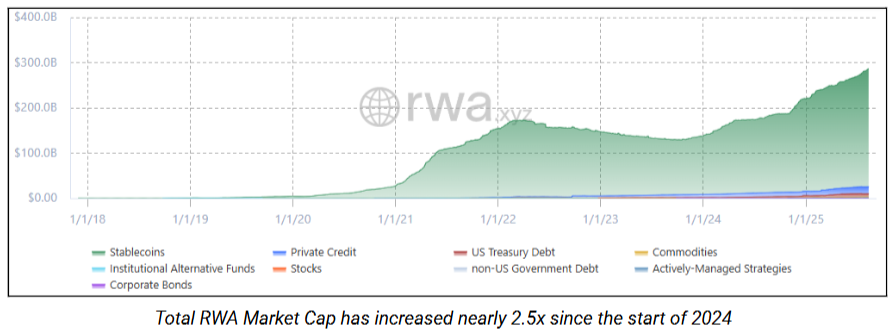
But how do tokenized U.S. Treasuries know the current interest rates? How do on-chain gold tokens verify physical reserves? How do cross-chain asset transfers ensure safety and compliance?
They all need Chainlink. The premise is having a trusted data and interoperability layer.
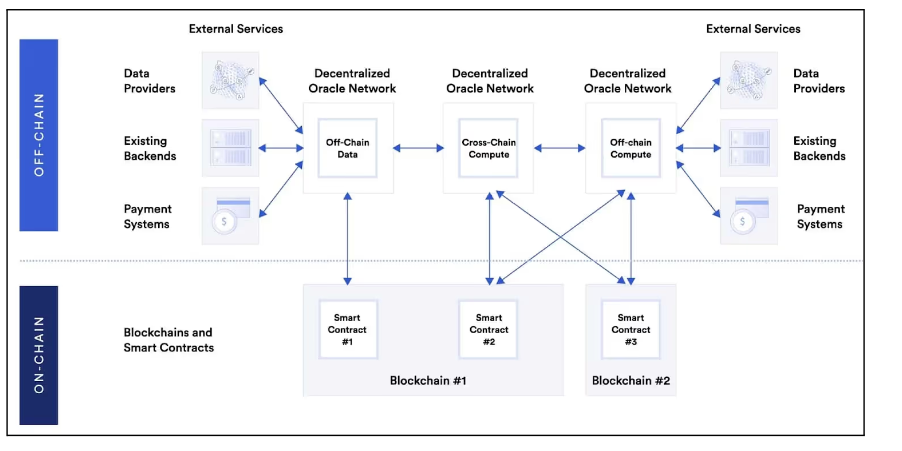
- ### Business Monopoly, Yet Undervalued
Chainlink is a true monopolist in its field:
$24 trillion+ of on-chain transaction value has been realized through Chainlink.
$85 billion of total value secured (TVS).
18 billion+ total verified messages.
50+ blockchain integrations, 500+ application integrations.
No competitor can provide the combination of technical reliability, product breadth, compliance capability, and institutional trust that Chainlink offers. Once integrated, it becomes a critical infrastructure with high switching costs and self-reinforcing network effects.
Comparison Dimensions
Chainlink (LINK)
Ripple (XRP)
Actual Utility
Provides critical infrastructure for 500+ protocols.
Almost no actual use.
Institutional Adoption
Deep integration with SWIFT, JPMorgan, DTCC, etc.
Very few institutions actually use it.
Market Share
90%+ TVS (Total Value Secured by Oracles).
Not applicable.
Market Cap
Approximately $22 billion.
Approximately $330 billion.
In comparison, XRP's market cap is 15 times that of LINK, yet it has less than one-tenth of LINK's actual value.
- ### Narrative Reversal
For years, LINK has been burdened with the negative narrative of "team dumping." However, the LINK reserve mechanism launched in August 2024 has brought about a change.
Previously: Chainlink Labs funded operations by selling tokens, leading to continuous selling pressure.
Now: Hundreds of millions in corporate revenue are automatically converted into LINK purchases, creating sustained buying pressure.
With more collaboration expectations and more institutions piloting production in the next 12-18 months, verifiable on-chain revenue is expected to soar.
The market is still viewing LINK through an outdated lens, while its fundamentals have undergone a fundamental transformation. This cognitive gap is the source of a significant investment opportunity.
Global Financial Giants' Chainlink Deployment Map
The report also lists some key collaboration use cases, especially among traditional financial giants.
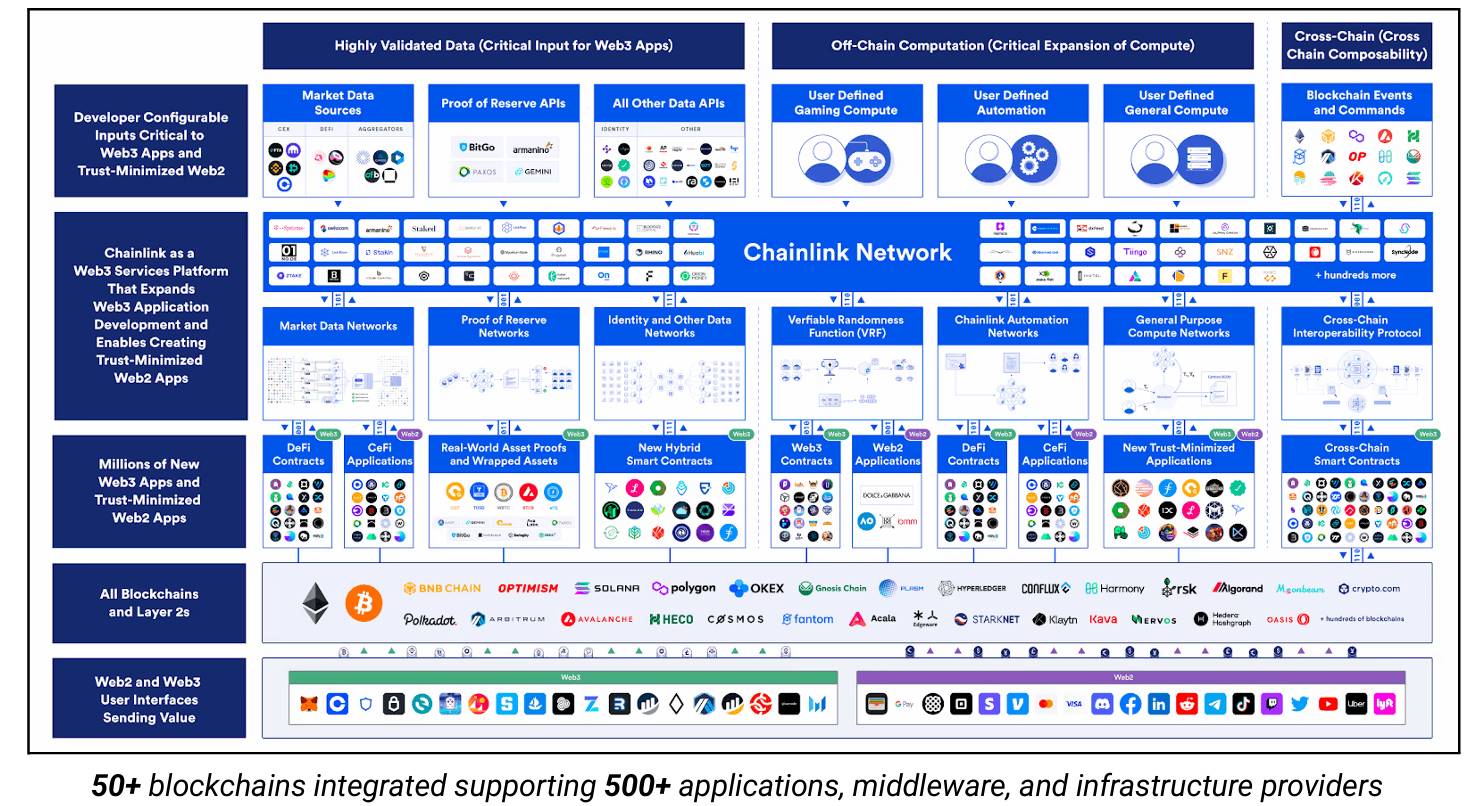
- SWIFT: In November 2024, using Chainlink CCIP to trigger on-chain token operations via traditional SWIFT messages.
- Participating institutions include: ANZ, BNP Paribas, BNY Mellon, Citibank, Clearstream, Euroclear, Lloyds Bank, etc.; successfully simulated the transfer of tokenized assets between public and private chains.
- JPMorgan Kinexys: In June 2025, JPMorgan's blockchain division Kinexys completed the first cross-chain delivery versus payment (DvP) settlement with Ondo Finance.
- Chainlink's role: CRE (Corporate Runtime Environment) coordinates workflows, and the CCIP protocol ensures secure cross-chain messaging.
- White House Recognition, Technical and Policy Endorsement:
At the White House Crypto Summit, founder Sergey Nazarov was invited to participate and directly engage with the President and cabinet officials.
The White House Digital Asset Report - Chainlink is officially recognized as a core infrastructure of the digital asset ecosystem.
Chainlink released detailed proposals for 10+ federal agency blockchain use cases.
Most importantly, these are not isolated experiments; each successful pilot represents a use case. Chainlink's shadow is present in all these use cases, even if it may not be in the spotlight.
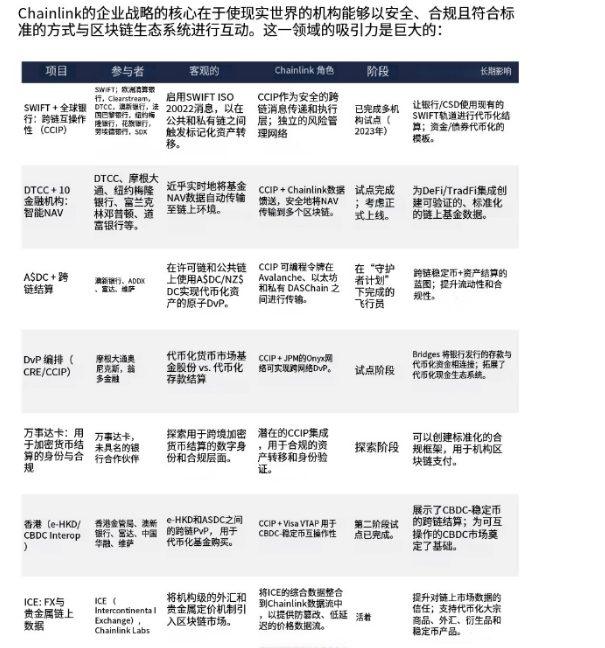
(Typical enterprise collaboration cases of Chainlink, AI translation)
Not Just an Oracle, the Monopoly Position of Middleware
Many people's understanding of Chainlink is still stuck at the "price oracle" stage. In reality, Chainlink has built a complete blockchain middleware ecosystem, becoming an indispensable bridge connecting blockchain and the real world.
Its products cover five key areas:
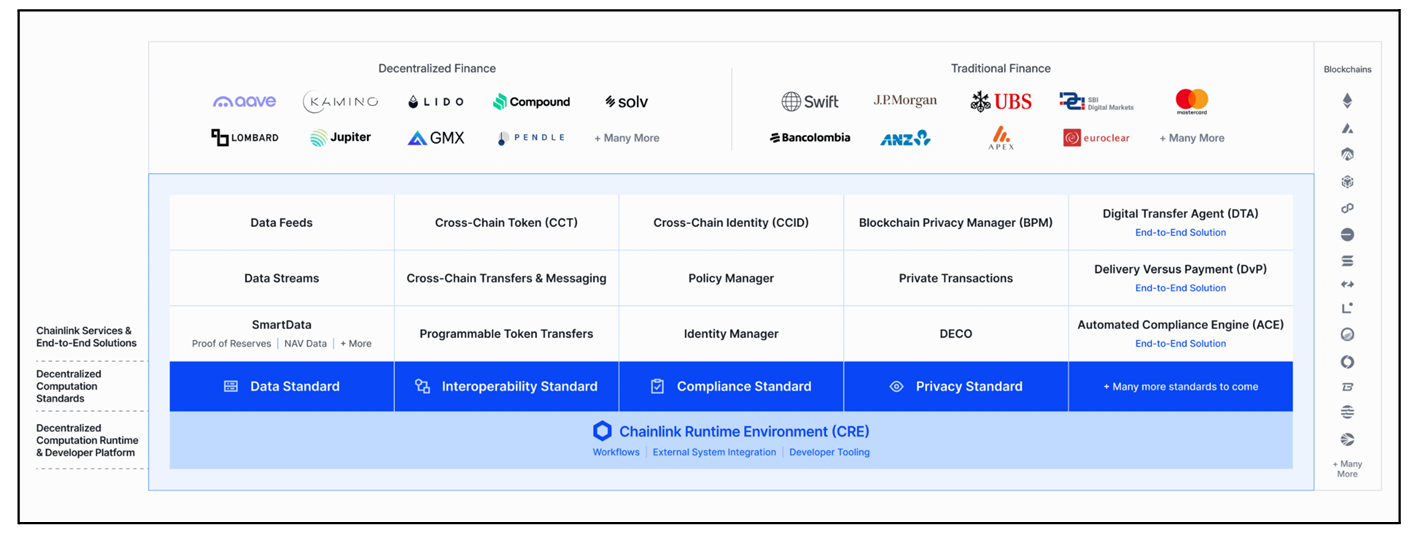
Data
Provides market data streams (such as price sources), proof of reserves, verifiable randomness, and ultra-low latency data streams.
These features ensure that blockchain applications can reliably access off-chain data, supporting various scenarios such as finance, gaming, and insurance.
Compute
Provides off-chain computing capabilities (e.g., complex computations realized through Functions) and event-driven automation features.
This allows blockchains to handle complex logic and computations without over-consuming on-chain resources.
Cross-Chain Interoperability
Provides CCIP (Cross-Chain Interoperability Protocol), supporting multi-network risk management.
CCIP enables secure transfer of assets and data between different blockchains, solving the cross-chain communication problem.
Compliance
Provides an Automated Compliance Engine (ACE) for programming compliance requirements based on legal rules.
This is particularly important for institutional users, helping them meet regulatory requirements.
Enterprise Integration Layer
Provides Chainlink Runtime Environment (CRE) to coordinate workflows between private and public chains.
CRE helps enterprises achieve seamless integration of blockchain with traditional systems, reducing friction and risk.
These are not standalone products but a synergistic system. When SWIFT uses Chainlink, they are not just using an oracle; they are accessing a complete infrastructure.
The competitive advantage here is that other market participants typically can only cover one or two areas, while Chainlink is the only solution that covers all key areas.
The benefit for institutions using Chainlink is that they can use it as the sole integration point, significantly reducing integration friction and risk.
This full-stack capability, combined with years of accumulated security records and institutional trust, forms a technological moat that is nearly impossible to replicate.
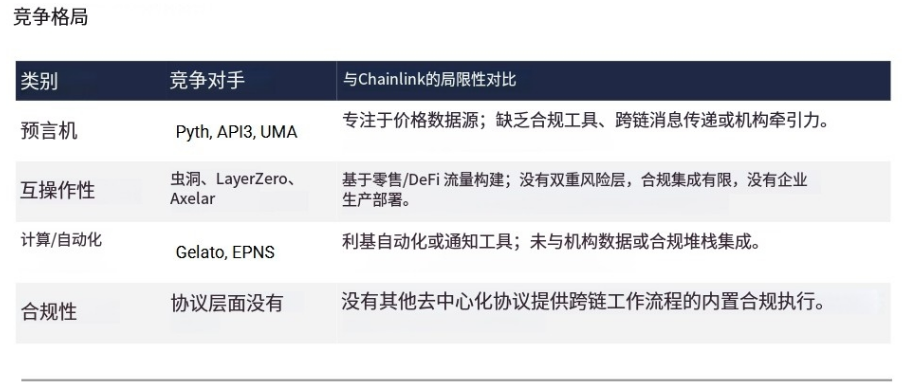
How Should LINK Be Valued?
Now we come to the most critical question: How much is LINK really worth?
The report employs several independent valuation methods, all pointing to similar conclusions.
Method 1: Comparative Valuation Against XRP
Taking XRP as an example, this "bank coin" created in 2012 has yet to deliver on its promised use cases, with almost no real institutional adoption, yet it boasts a fully diluted market cap of $330 billion.
In contrast, Chainlink has been adopted by top global financial institutions, yet its market cap is only 1/15th that of XRP.
Assuming LINK is worth at least as much as XRP, the current market cap of XRP is 15 times that of LINK, providing investors with a highly attractive risk/reward opportunity.
Considering Chainlink's clearly superior fundamentals, LINK's valuation is more appropriately compared to traditional financial companies (like Visa and Mastercard), which have similar positioning in payment processing and data infrastructure.
Using the market caps of these companies for comparison, LINK has 20-30 times upside potential.

Method 2: Traditional Company Logic, Market Share Method
By 2030, approximately $19 trillion of real-world assets will be tokenized globally.
As the "data pipeline" and "cross-chain bridge" for these assets, Chainlink is expected to capture 40% of this market share, servicing around $7.6 trillion of tokenized assets.
These assets will generate approximately $380 trillion in transaction volume for Chainlink annually. Based on a gradually increasing fee rate (currently charging 0.005% per transaction), Chainlink's annual revenue by 2030 is projected to reach $82.4 billion.
With an annual revenue of $82.4 billion, using a 10x price-to-sales (PS) ratio, Chainlink's enterprise value would be approximately $824 billion.
Assuming the total supply of LINK remains around 1 billion tokens, an $824 billion network value implies a theoretical value of about $824 per LINK. The current price is only around $22, indicating about 38 times potential upside.
Of course, this 38 times is seen as a theoretical valuation by the translator, and any change in assumptions could significantly alter the results.
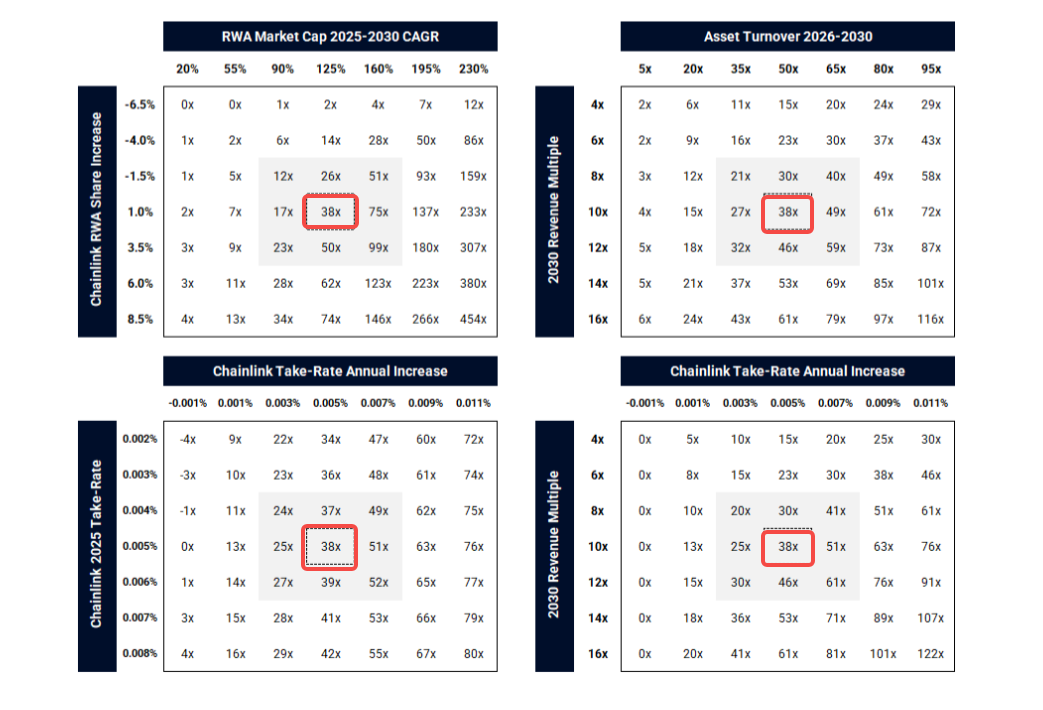
Recent Catalysts (Q3/Q4)
LINK Reserve Mechanism
For years, Chainlink has driven industry growth through substantial service subsidies, but this has obscured its profit potential, forcing Chainlink Labs to sustain operations through token sales. The newly launched LINK Reserve mechanism will fundamentally change this situation:
Funding flow reversal, with hundreds of millions in off-chain corporate revenue automatically used for market buybacks of LINK.
Market pressure transformation, shifting from continuous selling pressure to net buying pressure.
Confirming Chainlink's enterprise-level profit potential.
Data Service Expansion
Data Streams Covering Traditional Financial Assets: On August 4, it officially supported real-time pricing for U.S. stocks and ETFs, providing data support for tokenized funds, synthetic assets, and on-chain structured products.
ICE Partnership: Announced on August 11, integrating comprehensive data streams for foreign exchange and precious metals from the Intercontinental Exchange, providing critical support for institutional-level on-chain pricing.
CCIP Launch on Solana: In May, CCIP went live on the Solana mainnet, enabling cross-ecosystem settlement and messaging between EVM and SVM environments.
Product Function Upgrades: Privacy and Staking Rewards Need Attention
Privacy and permissioned features, including the launch of CCIP private transactions; meeting confidentiality requirements for bank cross-chain transactions; Chainlink Privacy Manager ensures sensitive data does not leak onto public chains.
Privacy security is also a prerequisite for banks to transition from pilot to production using Chainlink.
Staking v0.2 and fee distribution are currently live, supporting staking for more service types.
In future upgrades, user fees will be directly rewarded to stakers; as data flow and CCIP transaction volumes grow, staking rewards will significantly increase.
This is somewhat similar to staking rewards after Ethereum's merge, but based on real enterprise-level revenue.
Conclusion
Chainlink offers one of the most asymmetric risk/reward configurations in all financial markets.
No competitor can match Chainlink's advantages in integration breadth, technical reliability, regulatory compliance, and institutional trust. High-profile pilot projects will expand into production environments in the next 12 to 18 months. Each integration deepens its moat through high switching costs, network effects, and entrenched compliance processes.
Financially, Chainlink provides diversified, recurring, and scalable revenue streams, covering CCIP transaction fees, institutional data subscription services, proof of reserve certifications, and automation services, creating a persistent growth engine directly related to the adoption of tokenized assets. With global tokenization expected to reach trillions of dollars, the addressable market is vast and has yet to be effectively penetrated.
Despite these fundamental advantages, LINK remains a mispriced asset, with its valuation resembling a speculative project rather than a monopolistic financial infrastructure provider.
As the tokenized economy matures and Chainlink integrations shift to production environments, the market will be forced to significantly reassess LINK to reflect its systemic importance, revenue potential, and irreplaceable role in the global financial system.
免责声明:本文章仅代表作者个人观点,不代表本平台的立场和观点。本文章仅供信息分享,不构成对任何人的任何投资建议。用户与作者之间的任何争议,与本平台无关。如网页中刊载的文章或图片涉及侵权,请提供相关的权利证明和身份证明发送邮件到support@aicoin.com,本平台相关工作人员将会进行核查。




